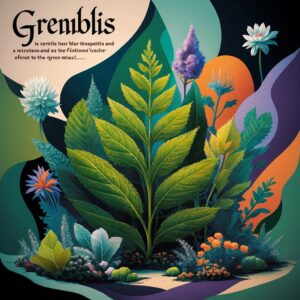
Coomersu: Understanding the Intersection of Consumerism and Coomer Culture
Coomersu is an emerging term that blends the concepts of consumerism and coomer culture, reflecting a growing phenomenon in modern society. As this concept gains traction, it’s essential to explore its origins, the driving forces behind it, and its impact on society. In this article, we will delve into the intricacies of coomersu, offering comprehensive insights and analyses that go beyond what is typically available online.
Contents
The Origins of Coomersu
What is Coomersu?
Coomersu is a portmanteau of “consumerism” and “coomer,” a term that has become synonymous with excessive and compulsive behavior, often linked to internet culture. While consumerism refers to the preoccupation with purchasing goods and services, “coomer” originally described a subculture of individuals who engage excessively in certain online behaviors, particularly related to adult content. The term “coomersu” represents the merging of these two concepts, highlighting the compulsive consumption patterns driven by modern digital and consumer cultures.
The Evolution of Consumerism
Consumerism has been a defining characteristic of modern society, particularly in the United States, where the economy thrives on consumer spending. Over the years, consumerism has evolved from a basic need for goods and services to a complex social phenomenon fueled by advertising, technology, and cultural trends. In recent decades, the rise of digital platforms and social media has amplified consumerism, creating a 24/7 cycle of consumption that often blurs the line between need and desire.
The Rise of Coomer Culture
Coomer culture emerged from internet communities, where individuals engaged in excessive consumption of online content, often to the detriment of their mental and physical well-being. This subculture is characterized by compulsive behaviors, such as binge-watching, excessive gaming, and an over-reliance on instant gratification. The term “coomer” itself became a meme, symbolizing the consequences of digital overindulgence. As this culture gained attention, it began intersecting with consumerism, giving rise to the concept of coomersu.
The Key Drivers of Coomersu
Digitalization and Instant Gratification
One of the primary drivers of coomersu is the digitalization of consumer culture. With the advent of the internet, e-commerce, and social media, consumers are constantly bombarded with advertisements and product placements. This digital environment encourages instant gratification, where purchases can be made with a single click, and products are delivered almost instantly. The ease of access and the dopamine rush associated with instant gratification contribute to the compulsive behaviors seen in coomersu.
Social Media Influence
Social media platforms play a significant role in shaping coomersu. Influencers, brands, and targeted advertising create an environment where consumers are constantly encouraged to buy more. The fear of missing out (FOMO), coupled with the desire to emulate the lifestyles of influencers, drives individuals to engage in coomersu. The curated content on social media often portrays a distorted reality, where happiness and success are equated with material possessions, further fueling the cycle of consumption.
Psychological Factors
Psychological factors such as stress, anxiety, and loneliness also contribute to coomersu. In many cases, individuals turn to consumption as a coping mechanism, seeking comfort in the purchase of goods or the consumption of digital content. The temporary relief provided by these behaviors can lead to a vicious cycle of compulsive consumption, where the underlying issues remain unaddressed.
The Impact of Coomersu on Society
Economic Implications
The rise of coomersu has significant economic implications. On one hand, it drives consumer spending, which is a key component of economic growth. On the other hand, it can lead to financial instability for individuals who engage in excessive and impulsive spending. The increasing reliance on credit and the accumulation of debt are common consequences of coomersu, posing a risk to long-term financial health.
Mental and Physical Health Consequences
Coomersu also has profound effects on mental and physical health. The compulsive behaviors associated with this phenomenon can lead to increased stress, anxiety, and depression. The constant pursuit of instant gratification often results in a lack of fulfillment, as the satisfaction from purchases or digital consumption is fleeting. Additionally, the sedentary lifestyle associated with excessive digital consumption can contribute to physical health issues, such as obesity and chronic conditions.
Cultural Shifts
Coomersu reflects a broader cultural shift towards materialism and superficiality. As society becomes increasingly focused on consumption, values such as community, sustainability, and personal growth may be overshadowed. This shift can lead to a more isolated and disconnected society, where individuals prioritize possessions over relationships and personal well-being.
Addressing Coomersu: Strategies for Individuals and Society
Mindful Consumption
One of the most effective ways to combat coomersu is through mindful consumption. This involves being aware of one’s purchasing habits and making intentional decisions that align with personal values and long-term goals. Mindful consumption encourages individuals to prioritize quality over quantity, reduce impulsive spending, and focus on experiences rather than material possessions.
Digital Detox and Self-Regulation
Given the digital roots of coomersu, implementing a digital detox can be beneficial. This involves setting boundaries on screen time, reducing exposure to social media, and engaging in offline activities that promote well-being. Self-regulation techniques, such as setting spending limits and practicing delayed gratification, can also help individuals break free from the cycle of compulsive consumption.
Promoting Financial Literacy
Improving financial literacy is crucial in addressing the economic aspects of coomersu. Educating individuals on budgeting, saving, and responsible spending can empower them to make informed financial decisions and avoid the pitfalls of excessive consumption. Financial literacy programs can be implemented in schools, workplaces, and communities to promote long-term financial stability.
Fostering Community and Connection
Building strong community ties and fostering meaningful connections can counteract the isolation and disconnection associated with coomersu. Engaging in community activities, volunteering, and nurturing relationships can provide a sense of purpose and fulfillment that goes beyond material possessions. By focusing on relationships and shared experiences, individuals can find contentment and reduce the reliance on consumption for happiness.
The Future of Coomersu: Trends and Predictions
The Role of Technology
As technology continues to evolve, so too will the dynamics of coomersu. The integration of artificial intelligence, virtual reality, and augmented reality into consumer experiences may further blur the line between digital and physical consumption. While these advancements offer exciting possibilities, they also pose challenges in managing compulsive behaviors. The future of coomersu will likely involve finding a balance between embracing technological innovations and mitigating their potential negative effects on consumer behavior.
Shifts Towards Sustainable Consumption
In response to the negative impact of coomersu, there is a growing movement towards sustainable consumption. This shift emphasizes the importance of purchasing goods and services that have a positive impact on the environment and society. As consumers become more aware of the consequences of their consumption patterns, they may opt for products that are ethically produced, environmentally friendly, and contribute to the well-being of communities. This trend has the potential to reshape consumer behavior and reduce the prevalence of coomersu.
The Influence of Generational Change
Generational change will also play a role in the future of coomersu. Younger generations, particularly Millennials and Gen Z, are more likely to prioritize experiences over material possessions and value sustainability and social responsibility. As these generations become the dominant consumer group, their values may influence broader societal trends and lead to a decline in coomersu. However, the challenge will be ensuring that these values are not co-opted by marketing strategies that promote consumption under the guise of sustainability.
FAQs About Coomersu
What is Coomersu?
Coomersu is a term that blends consumerism and coomer culture, reflecting the compulsive consumption patterns driven by modern digital and consumer cultures.
How does Coomersu impact mental health?
Coomersu can lead to increased stress, anxiety, and depression due to the compulsive behaviors associated with excessive consumption and instant gratification.
What are some strategies to combat Coomersu?
Strategies to combat coomersu include mindful consumption, digital detox, self-regulation, improving financial literacy, and fostering community connections.
Is Coomersu a global phenomenon?
While coomersu is particularly prevalent in the United States, it is a global phenomenon influenced by the widespread reach of digital platforms and consumer culture.
How can I practice mindful consumption?
Mindful consumption involves making intentional purchasing decisions, prioritizing quality over quantity, and focusing on experiences rather than material possessions.
Conclusion
By providing an in-depth exploration of coomersu, this article aims to offer valuable insights into a phenomenon that is increasingly shaping modern society. Understanding the drivers, impact, and strategies to address coomersu can empower individuals and communities to navigate the challenges of a consumer-driven world.












































Post Comment